Embedded System Definition
An embedded system is a microprocessor- or microcontroller-based system of hardware and software designed to perform dedicated functions within a larger mechanical or electrical system.
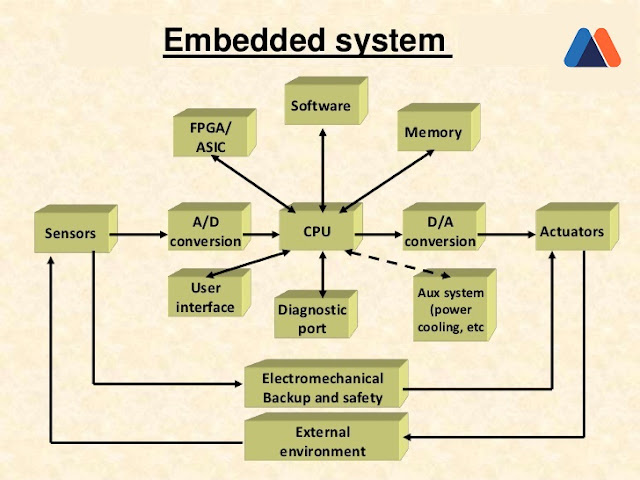
What is an Embedded System?
An embedded system is a microprocessor-based computer hardware system with software that is designed to perform a dedicated function, either as an independent system or as a part of a large system. At the core is an integrated circuit designed to carry out computation for real-time operations.
Complexities range from a single microcontroller to a suite of processors with connected peripherals and networks; from no user interface to complex graphical user interfaces. The complexity of an embedded system varies significantly depending on the task for which it is designed.
Embedded system applications range from digital watches and microwaves to hybrid vehicles and avionics. As much as 98 percent of all microprocessors manufactured are used in embedded systems
How an Embedded System Works
Embedded systems are computers. Therefore, like most other computers, they contain a combination of hardware and software such as microprocessors, microcontrollers, volatile and non-volatile memory, graphics processing units (GPUs), input/output communication interfaces and ports, power supplies, and system and application code. However, embedded systems have four main factors that differentiate them from a typical workstation or server: purpose, design, cost, and human involvement.
Like any other computer, embedded systems leverage printed circuit boards (PCBs) programmed with software that guides the hardware on operation and data management using memory and input/output communication interfaces. The result is the terminal production of output that is of value to the end user. As such, at a fundamental level, embedded systems are not too different from workstations and servers.
Basic Structure of an Embedded System
The basic structure of an embedded system includes the following components:
- Sensor: The sensor measures and converts the physical quantity to an electrical signal, which can then be read by an embedded systems engineer or any electronic instrument. A sensor stores the measured quantity to the memory.
- A-D Converter: An analog-to-digital converter converts the analog signal sent by the sensor into a digital signal.
Processor & ASICs: Processors assess the data to measure the output and store it to the memory. - D-A Converter: A digital-to-analog converter changes the digital data fed by the processor to analog data
- Actuator: An actuator compares the output given by the D-A Converter to the actual output stored and stores the approved output.
Components of Embedded Systems
The components of embedded systems consist of hardware and software elements that work together to enable the desired functionality of the system.
Hardware components of embedded systems
The hardware components of embedded systems encompass various physical elements that comprise the system infrastructure. These include power supply, microcontrollers and microprocessors, memory, timers and counters, communication interfaces, input/output, and electrical circuits, all of which work together to enable the desired functionality of the embedded system.
- Power supply
The power supply component is an electrical unit responsible for powering up the electrical load of the embedded system. While a 5V power supply is generally required, the range can go from 1.8V to 3.3V, depending on the application.
To ensure seamless system operations, a smooth and efficient power supply is a must. The power supply unit can either be live (such as from a wall adapter) or battery-powered. Some embedded systems use an independent power supply, while others leverage the same source as the larger technology being powered.
- Microcontroller and microprocessor
Embedded systems come in two key variants: microcontroller-powered and microprocessor-powered. A form of integrated circuits, these components give the system its computing power. In simple terms, the microcontroller or microprocessor serves as the brain of the embedded system and drives its performance.
Processors range from 8-bit to 16-bit to 32-bit, with the main difference in processing speed and throughput. For instance, a 32-bit processor has a higher processing speed since it can manipulate 32 bits at once, while a 16-bit processor has a comparatively lower processing speed as it manipulates only 16 bits at a time. So why don’t all embedded systems come fitted with 32-bit processors? It’s simple. Not all applications require high processing speed and associated higher costs!
- Memory
The memory component is essential for storing critical data in embedded systems. This component is generally integrated into the microprocessor or microcontroller. The two types of memory are RAM (random access memory) and ROM (read-only memory).
RAM is also known as the ‘data memory’ and is volatile, which means that it stores information only temporarily and is wiped clean when the power supply is turned off. On the other hand, ROM is also known as the ‘code memory’ and is responsible for storing the program code. It is non-volatile, storing system information even when the power supply is turned off.
- Timer and counter
Timers are used in applications requiring the creation of a delay before the execution of a specific function by the embedded system. On the other hand, counters are used in applications where the number of times a specific event takes place needs to be tracked. Up counters count upward from the starting value to 0xFF, while down counters count downward to 0x00. Counters are integrated into the system using register-type circuits.
- Input/output
Input components allow other components within the larger interconnected infrastructure to interact with the embedded system. For instance, a sensor helps provide inputs for the system to process. Once processing is complete (for instance, counting), the results are communicated to the required destination via the output component.
- Communication interface
Communication interfaces enable embedded systems to establish communications with each other and other components within the larger system. Different interfaces include USB, I2C, UART, RS-485, and SPI. For simple applications, communication ports within the microcontroller are utilized, and ports can be externally installed in case of advanced applications.
- Electrical circuit
Depending on the application, embedded systems can contain customized electrical circuits. Some of the basic components used in electrical circuits of embedded systems are:
- Printed circuit board (PCB)
The PCB is a crucial component within the electrical circuit of embedded systems. It is a mechanical circuit board that uses conductive copper traces to link other components electronically. Electronic circuits made using a PCB are more cost-effective and operationally efficient than wire wrap or point-to-point configurations.
- Resistor
The resistor is an electrical component primarily responsible for producing resistance in the current flow. It reduces current flow in a calculated manner to adjust signal levels. Motor controls and power distribution systems use high-power resistors to dissipate more heat.
The resistor’s electrical function depends on its resistance; the greater the resistance, the more resistance is created in the current flow. Resistors are subdivided into fixed and variable, with fixed resistors changing their resistance with temperature and variable resistors leveraged as sensing devices for light, humidity, heat, and force.
- Capacitor
A capacitor is an electrical circuit component with two terminals. It is mainly used for energy storage and release as the circuit requires. While capacitors come in various forms, most feature two electrical conductors separated using a dielectric material. Capacitors are used for various applications, including smoothing, bypassing, and filtering electrical signals.
- Diode
A diode allows the current to flow in only a single direction. This component is generally made of semiconductor materials such as silicon or germanium. It is useful for applications such as switches, signal mixers, logic gates, voltage regulators, limiters, clippers, gain control circuits, and clampers.
- Transistor
In the electrical circuit, transistors are responsible for switching and amplification. They come in two main types: metal-oxide-semiconductor field-effect transistor (MOSFET), which is a voltage-controlled component with terminals such as source, gate, and drain; and bipolar junction transistor, which is a current-controlled component with terminals such as base, emitter, and collector.
Transistors are used in various applications such as computers, aircraft, pacemakers, stoves, and motor control. This component works on a simple principle: the small current at one terminal produces a large current in the other terminals for amplification.
- Integrated circuit
The integrated circuit combines numerous electrical components within one chip. It helps users by providing a ready-made chip that can be directly incorporated into the embedded system without capacitors and resistors having to be added separately. Integrated chips can function as oscillators, microprocessors, amplifiers, memory units, timers, and more.
- Light-emitting diode (LED)
LEDs are widely used in electrical circuits to indicate whether the circuit functions correctly. LEDs allow users to identify the state of current within the circuit.
- Inductor
Finally, the inductor is an electrical component for energy storage in an electric field and within the presence of an electrical current. An inductor takes the form of an insulated wire encircling a coil. It blocks alternating current while allowing direct current to flow. Inductors used for this function are known as ‘chokes.’
Software components of embedded systems
Unlike computer software, which can be installed on different devices to achieve the same goal, embedded system software is specifically written for a particular type of device, and its goals are much narrower in scope. The software components of embedded systems are:
- Text editor
A text editor is the first software component needed for building an embedded system. This editor is used to write source code in C and C++ programming languages and save it as a text file.
- Compiler
This component’s core function is the development of an executable program. Once the code is prepared in the text editor, the machine must understand it. This is achieved with the compiler’s help, translating the written code into low-level machine language. Examples of low-level languages include machine code, assembly language, and object code.
- Assembler
The assembler is for instances where assembly language is the programming language used to build the application. The assembly language program is translated into HEX code for further processing. Once the code is written, the programmer is used to write the program on the chip.
This is slightly different than the process followed in a compiler. In the compiler, written code is directly converted into machine language. On the other hand, the assembler first converts source code to object code, after which the object code is converted into machine language.
- Emulator
This component makes the embedded system behave like a real, live system while operating in a simulation environment. Simply put, it simulates software performance and helps ensure that the performance of the written code is ideal. The emulator is used to gain an idea of the way the code will operate in real time.
- Link editor
Software code is generally written in small-sized pieces and modules. The link editor, also known as a ‘linker,’ is the component used to take one or more object files and integrate them to develop a single executable code.
- Debugger
Finally, the debugger is a software component used for debugging and testing. It is responsible for scanning the code, removing bugs and other errors, and highlighting the specific instances where they occurred. The debugger helps programmers address errors swiftly.
Types of embedded systems
When considering performance and functional requirements, embedded systems are categorized into real-time embedded systems, standalone embedded systems, networked embedded systems, and mobile embedded systems.
- Real-time embedded systems prioritize prompt output generation and can be classified as soft real-time (lenient deadlines) or hard real-time (strict deadlines).
- Standalone embedded systems can function independently without a host computer.
- Networked embedded systems rely on network connections and communication for output generation.
- Mobile embedded systems refer to small, portable devices such as smartphones and laptops.
Finally, when classified based on microcontroller performance, embedded systems are divided into small-scale, medium-scale, and sophisticated categories, depending on the bit size of the microcontroller.
History of Embedded Operating Systems
The first modern, real-time embedded computing system was the Apollo Guidance Computer, developed in the 1960s by Dr. Charles Stark Draper at the Massachusetts Institute of Technology for the Apollo Program. The Apollo Guidance Computer was designed to collect data automatically and provide mission-critical calculations for the Apollo Command Module and Lunar Module.
In 1971, Intel released the first commercially available microprocessor unit — the Intel 4004 — an early microprocessor that still required support chips and external memory; in 1978 the National Engineering Manufacturers Association released a standard for programmable microcontrollers, improving the embedded system design; and by the early 1980s, memory, input and output system components had been integrated into the same chip as the processor, forming a microcontroller.
The microcontroller-based embedded system would go on to be incorporated into every aspect of consumers’ daily lives, from credit card readers and cell phones, to traffic lights and thermostats.
Future Trends in Embedded Systems
The industry for embedded systems is expected to continue growing rapidly, driven by the continued development of Artificial Intelligence (AI), Virtual Reality (VR) and Augmented Reality (AR), machine learning , deep learning, and the Internet of Things (IoT). The cognitive embedded system will be at the heart of such trends as: reduced energy consumption, improved security for embedded devices, cloud connectivity and mesh networking, deep learning applications, and visualization tools with real time data.
According to a 2018 report published by QYResearch, the global market for the embedded systems industry was valued at $68.9 billion in 2017 and is expected to rise to $105.7 billion by the end of 2025.

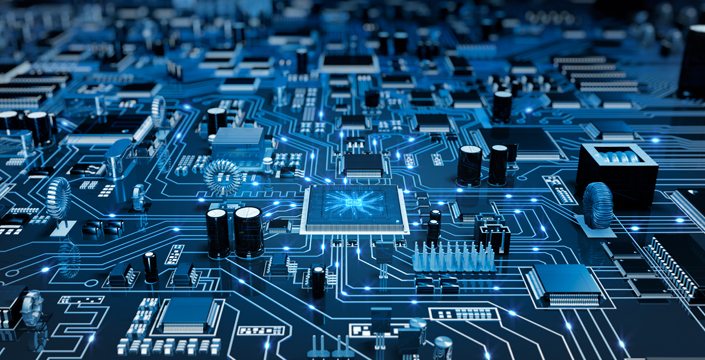
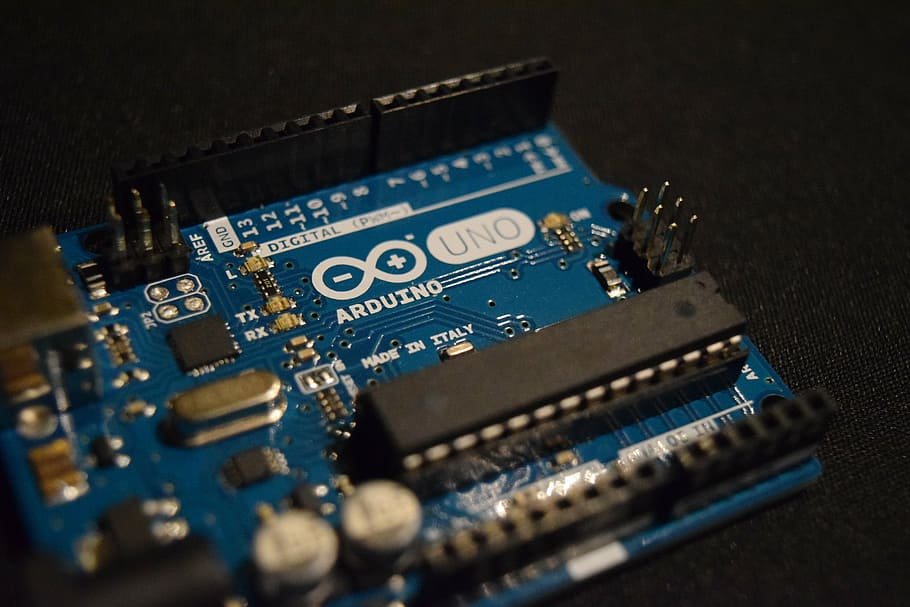
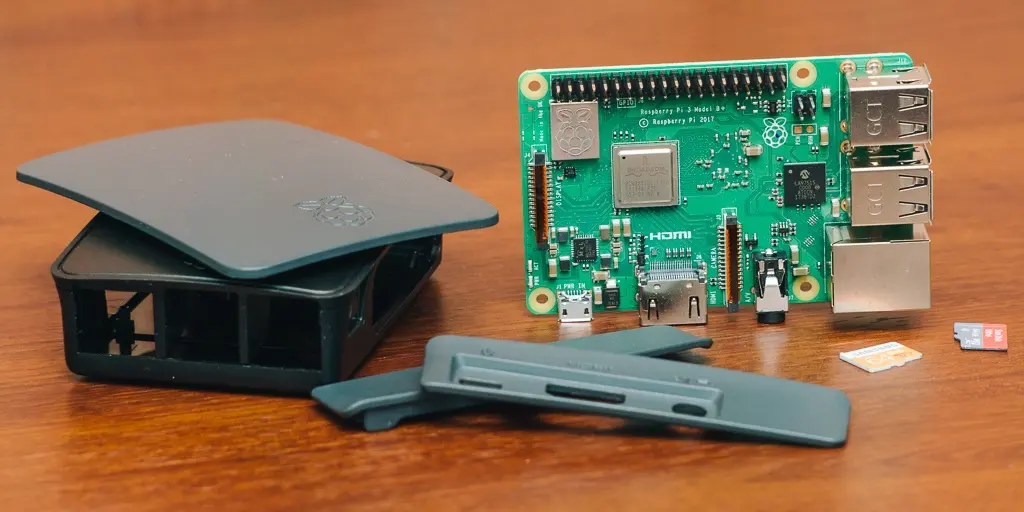

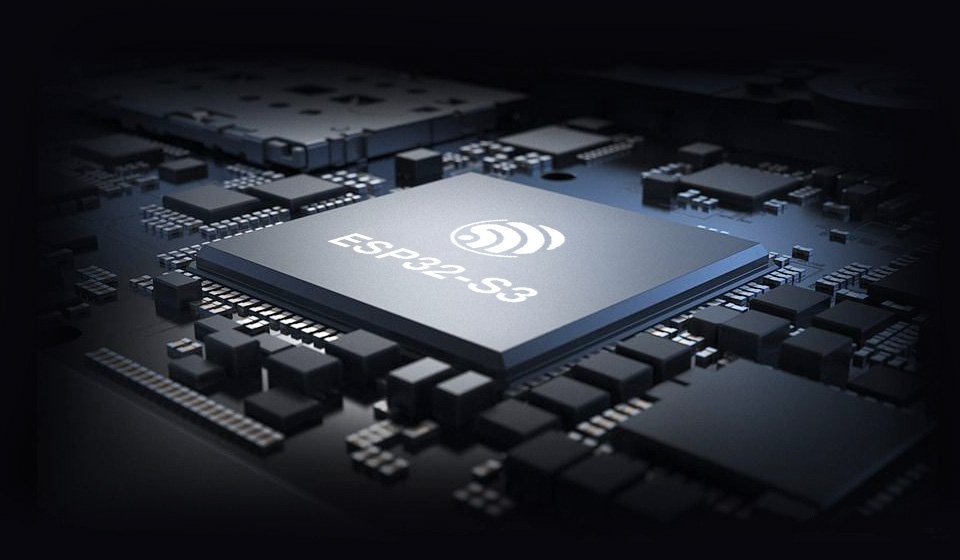
Have you ever considered publishing an e-book or guest authoring on other websites?
I have a blog centered on the same ideas you discuss and would really like to have you share
some stories/information. I know my audience
would appreciate your work. If you are even remotely interested, feel free to shoot
me an email.
Hi! This is my first visit to your blog!
We are a group of volunteers and starting a new initiative
in a community in the same niche. Your blog provided us valuable information to work
on. You have done a outstanding job!
My brother recommended I would possibly like this website.
He used to be totally right. This put up actually made my day.
You cann’t imagine just how much time I had spent for this information! Thanks!
I used to be able to find good information from your content.
Hello there! I could have sworn I’ve visited this blog
before but after going through a few of the articles I realized it’s new to me.
Anyhow, I’m definitely happy I stumbled upon it and I’ll be book-marking it
and checking back frequently!
Greetings I am so excited I found your blog page, I really found
you by error, while I was browsing on Google for
something else, Anyways I am here now and would just
like to say thanks a lot for a incredible post and a all round exciting blog (I also love the theme/design),
I don’t have time to browse it all at the minute but I have bookmarked it and also
included your RSS feeds, so when I have time I will
be back to read a lot more, Please do keep up the fantastic work.
Greetings, I think your website might be having browser compatibility issues.
Whenever I take a look at your site in Safari, it looks fine however, when opening in I.E.,
it’s got some overlapping issues. I just wanted
to provide you with a quick heads up! Other than that, fantastic blog!
It’s going to be end of mine day, but before end I am reading this wonderful piece of writing to improve my experience.
Have you ever considered about adding a little bit more than just your articles?
I mean, what you say is valuable and all. But think of if you added some great images
or videos to give your posts more, “pop”! Your content is excellent but with images and clips, this blog could definitely be
one of the very best in its field. Awesome blog!
Wow, this article is pleasant, my sister is analyzing these
things, so I am going to let know her.
Heya! I’m at work surfing around your blog from my new iphone 4!
Just wanted to say I love reading your blog and look forward to all
your posts! Keep up the outstanding work!
Hi, I do think this is an excellent website. I stumbledupon it
😉 I may come back yet again since I saved as a favorite it.
Money and freedom is the greatest way to change, may you be rich and continue to guide others.
I think this is one of the such a lot vital
information for me. And i am glad studying your article.
But should remark on some normal things, The site taste
is perfect, the articles is really nice : D. Excellent process, cheers
Hello there! I could have sworn I’ve visited this site before but after going
through many of the posts I realized it’s new to me.
Nonetheless, I’m definitely pleased I found it and I’ll be book-marking it
and checking back regularly!
I am extremely impressed together with your writing abilities as well as with the structure to your weblog.
Is this a paid subject matter or did you modify it yourself?
Either way keep up the excellent quality writing, it’s rare to peer a nice
weblog like this one nowadays..
Heya i’m for the first time here. I found this board and I to find It really helpful &
it helped me out a lot. I’m hoping to offer something back and help others like you aided me.
You can definitely see your expertise within the work you write.
The arena hopes for more passionate writers like you who are not afraid to mention how they believe.
Always go after your heart.
Thank you for the good writeup. It in fact was a amusement account
it. Look advanced to more added agreeable from you!
By the way, how can we communicate?
I’m not that much of a online reader to be honest but your blogs really nice, keep it up!
I’ll go ahead and bookmark your site to come back down the road.
Cheers
I do consider all the ideas you’ve offered in your post.
They’re very convincing and can certainly work.
Nonetheless, the posts are very brief for newbies.
May you please extend them a little from next time? Thanks for the post.
If some one desires expert view concerning running a
blog then i propose him/her to pay a quick visit this webpage, Keep up the pleasant work.
You actually make it appear really easy along with your presentation but I to
find this matter to be actually one thing that I feel I might never understand.
It kind of feels too complicated and very vast for me. I’m having a look
ahead in your subsequent publish, I will attempt to
get the dangle of it!
Simply want to say your article is as astounding.
The clearness for your publish is simply spectacular and that i could think you’re a
professional in this subject. Well along with your permission allow me
to grab your RSS feed to keep updated with forthcoming post.
Thank you one million and please carry on the gratifying work.
I’m extremely pleased to find this web site. I want
to to thank you for your time due to this wonderful read!! I definitely appreciated every
little bit of it and i also have you saved to fav to look at new things on your blog.
Thanks for finally writing about > What Are Embedded Systems?
Meaning, Components, and Applications – < Loved it!
We stumbled over here different web address and thought I may
as well check things out. I like what I see so now i’m following you.
Look forward to checking out your web page repeatedly.
Hi there to all, how is all, I think every one is getting more from this site,
and your views are good designed for new viewers.
I loved as much as you will receive carried out right here.
The sketch is tasteful, your authored subject matter stylish.
nonetheless, you command get bought an nervousness over that you wish be delivering the
following. unwell unquestionably come more formerly again as exactly the same nearly
very often inside case you shield this hike.